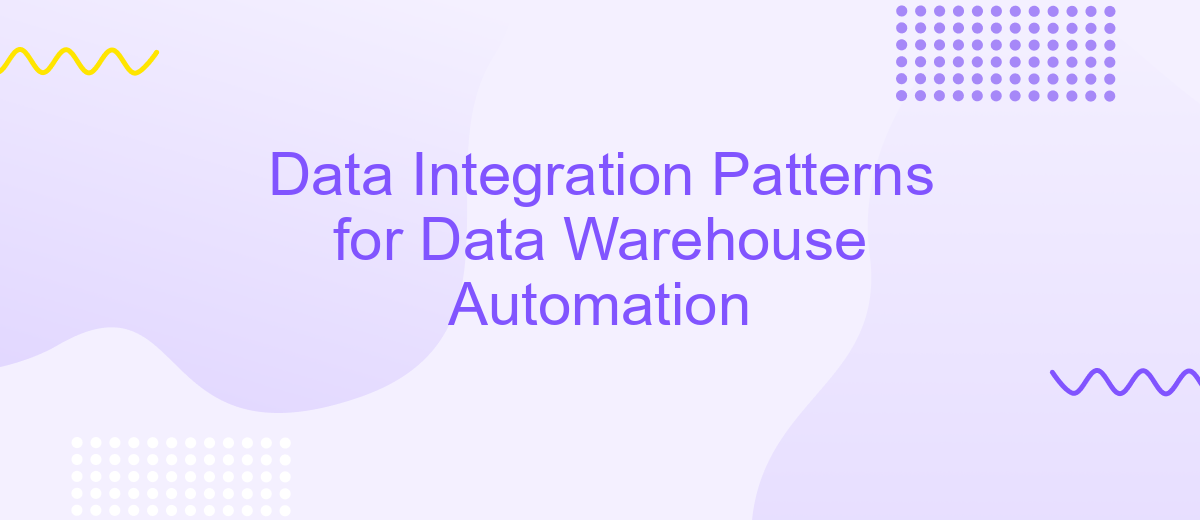Data Integration Patterns for Data Warehouse Automation
In the rapidly evolving landscape of data management, effective data integration is crucial for the success of any data warehouse automation project. This article explores various data integration patterns that can streamline processes, enhance data quality, and ensure seamless data flow. By understanding these patterns, organizations can optimize their data warehouses, enabling more efficient and accurate decision-making.
High-Level Overview
Data integration patterns are essential for the automation of data warehouses, facilitating efficient data consolidation from diverse sources. These patterns help in streamlining data workflows, ensuring data accuracy, and improving overall data management processes. By implementing robust data integration strategies, organizations can achieve seamless data synchronization, real-time data access, and enhanced decision-making capabilities.
- ETL (Extract, Transform, Load): This pattern involves extracting data from various sources, transforming it to fit operational needs, and loading it into the data warehouse.
- ELT (Extract, Load, Transform): Similar to ETL, but the transformation happens after loading the data into the data warehouse, leveraging the warehouse's processing power.
- CDC (Change Data Capture): This pattern tracks changes in data sources and applies these changes to the data warehouse, ensuring data is up-to-date.
- Data Virtualization: Allows real-time data integration by creating a virtual layer that provides a unified view of data from multiple sources without physical consolidation.
Implementing these data integration patterns can significantly enhance the efficiency and reliability of data warehouse automation. They provide scalable solutions that adapt to the growing data needs of organizations, ensuring that data-driven insights are accurate and timely. By leveraging these patterns, businesses can optimize their data operations and gain a competitive edge in the market.
ETL Data Integration

ETL (Extract, Transform, Load) is a fundamental data integration pattern used in data warehouse automation. This process involves extracting data from various source systems, transforming it to fit operational needs, and loading it into a data warehouse. ETL ensures that data is consistently clean, accurate, and available for analysis, making it indispensable for businesses aiming to derive actionable insights from their data. The transformation stage is particularly critical as it involves data cleansing, normalization, and aggregation to ensure that the data aligns with the warehouse schema and business intelligence requirements.
Modern ETL tools and services, such as ApiX-Drive, simplify the integration process by offering pre-built connectors and automated workflows. ApiX-Drive allows users to connect various data sources, including databases, cloud services, and APIs, without the need for extensive coding. This not only accelerates the data integration process but also reduces the risk of errors. By leveraging such tools, organizations can achieve seamless data flow, ensuring that their data warehouse remains up-to-date and reflective of real-time business operations.
ELT Data Integration

ELT (Extract, Load, Transform) is a modern approach to data integration that leverages the power of data warehouses for transformation tasks. Unlike traditional ETL (Extract, Transform, Load), ELT first loads raw data into the data warehouse and then performs necessary transformations within the database itself. This method is particularly beneficial for handling large volumes of data and complex transformations.
- Extract: Data is extracted from various source systems, including databases, APIs, and flat files.
- Load: The raw data is loaded directly into the data warehouse without any prior transformation.
- Transform: Data transformations are executed within the data warehouse, utilizing its processing power and scalability.
By offloading transformation tasks to the data warehouse, ELT reduces the time and resources needed for data processing. This approach not only improves performance but also simplifies the data integration workflow. As a result, organizations can achieve faster and more efficient data integration, making it easier to derive insights and make data-driven decisions.
Log-Based Change Data Capture

Log-based Change Data Capture (CDC) is a technique used to identify and capture changes made to a database by reading the transaction log. This method ensures that all modifications, including inserts, updates, and deletes, are detected efficiently without requiring direct access to the database tables. By leveraging the transaction log, log-based CDC minimizes the performance impact on the source database.
One of the primary advantages of log-based CDC is its ability to provide near real-time data replication and synchronization. This makes it an ideal choice for data warehouse automation, where timely and accurate data is crucial for analytics and reporting. Additionally, this approach supports a wide range of database systems, making it versatile and adaptable to various environments.
- Minimizes impact on source systems
- Provides near real-time data capture
- Supports various database platforms
- Ensures comprehensive change detection
Implementing log-based CDC involves configuring the database to enable transaction log reading and setting up the necessary tools to process and transfer the captured changes. This approach not only enhances data accuracy and consistency but also streamlines the process of maintaining an up-to-date data warehouse, facilitating better decision-making and business intelligence.


Real-Time Data Integration
Real-time data integration is a critical component for modern data warehouse automation, enabling businesses to make timely and informed decisions. By continuously synchronizing data from various sources, organizations can ensure that their data warehouse reflects the most current information. This approach minimizes latency and enhances the accuracy of data analytics, providing a competitive edge in today’s fast-paced market. Implementing real-time data integration requires robust tools and technologies that can handle the complexities of continuous data flow and transformation.
One such tool is ApiX-Drive, a powerful service designed to streamline the process of real-time data integration. ApiX-Drive offers a user-friendly interface and a wide range of pre-built connectors, making it easier to integrate disparate data sources without extensive coding. This service supports automated workflows that can be customized to meet specific business needs, ensuring seamless data synchronization. By leveraging ApiX-Drive, organizations can reduce the time and effort required to set up real-time data integration, allowing them to focus on deriving actionable insights from their data.
FAQ
What are the common data integration patterns used in data warehouse automation?
How does ETL differ from ELT in data warehouse automation?
What is Change Data Capture (CDC) and how is it used in data integration?
How can data integration be automated in a data warehouse setup?
What are the benefits of automating data integration in a data warehouse?
Apix-Drive is a simple and efficient system connector that will help you automate routine tasks and optimize business processes. You can save time and money, direct these resources to more important purposes. Test ApiX-Drive and make sure that this tool will relieve your employees and after 5 minutes of settings your business will start working faster.

